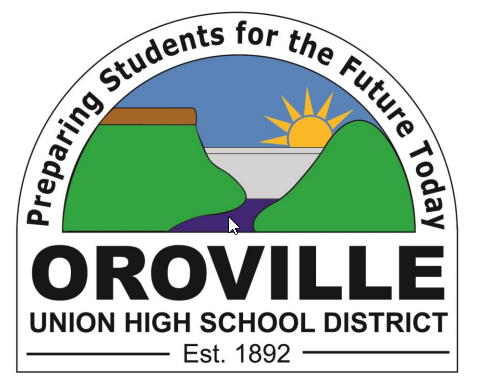Technical Assistance
About Compliance Monitoring
The California Department of Education (CDE) monitors compliance with state and federal laws regarding the provisions with the Individuals with Disabilites Act (IDEA). They do this by using the data that our local educational agencies (LEAs) input into their student information systems for all students and for students with disabilities. It is imperative that ALL members of the student's team, from case managers to district level data and special education administrators, understand the way in which data is collected and analyzed. This will help prevent potential areas of non-compliance and allow teams to plan for necessary staff training.

The CDE has introduced a new process called Compliance and Improvement Monitoring that uses three levels of monitoring for special education "elements." Elements that are monitored include a combination of special education performance and compliance indicators, and other requirements. For those who have met special education targets in all areas, Universal monitoring is indicated. For LEAs who have not met one or more specific targets for the current year, Targeted monitoring is indicated. For LEAs who have not met one or more specific targets over a period of three years, Intensive Monitoring is required.
Targeted monitoring designation is based on performance on specific Annual Performance Report Indicators and Disproportionality Indicators. Intensive monitoring designation is based on poor performance on School Age Indicators most closely aligned with the provision of a free and appropriate public education (FAPE) in the least restrictive environment (LRE). Specifically, Intensive Review involves academic achievement in ELA and mathematics, Suspension rates, Chronic Absenteeism, Percent of Students in General Education for more than 80% of the time, and Percent of Students in a Separate School.
Targeted and Intensive monitoring requires a review process and the development of a Compliance and Improvement Monitoring Plan or Comprehensive Coordinated Early Intervening Services (CCEIS) Plan. These reviews require a team of stakeholders to review LEA data, identify trends and root causes, and develop action steps to undertake to improve compliance in these areas. Each review has specific requirements. For more information, use the links below.
Disproportionality
The Individuals with Disabilities Education Act (IDEA 2004) requires states and local education agencies (LEAs) to take steps to address disproportionate representation. Disproportionality refers to the “overrepresentation” of a particular racial or ethnic group in one of four areas:
- special education in general;
- special education within a specific disability category;
- disciplinary action; or
- more restrictive environments.
The California Department of Education (CDE) outlined a process for addressing disproportionality from a compliance perspective. Significant Disproportionality occurs when a particular indicator is not meeting targets for three of the last four years. Learn more about the process by visiting the State Performance Plan - Technical Assistance Project . Click here to review the Butte County SELPA Policy on Over-Identification and Disproportionality.
CIM Assist: Our Custom AI Tool
.jpg) The Butte County SELPA recently collaborated with the Butte County Office of Education EdTech Division to create a unique AI tool to support effective and meaningful facilitation of the CIM process for our LEAs by SELPA Program Specialists. CIM Assist will be made available for use for the 2026 CIM Cycle shortly after the release of Annual Determination Letters by the CDE. Use of the CIM Assist tool will allow your SELPA and district teams to build greater understandign of their own data, create efficiencies for front line staff in the school setting, and provide explicis guidance for program specialists, coordinators, and directors who are responsible for facilitating this CIM process work on behalf of their LEAs.
The Butte County SELPA recently collaborated with the Butte County Office of Education EdTech Division to create a unique AI tool to support effective and meaningful facilitation of the CIM process for our LEAs by SELPA Program Specialists. CIM Assist will be made available for use for the 2026 CIM Cycle shortly after the release of Annual Determination Letters by the CDE. Use of the CIM Assist tool will allow your SELPA and district teams to build greater understandign of their own data, create efficiencies for front line staff in the school setting, and provide explicis guidance for program specialists, coordinators, and directors who are responsible for facilitating this CIM process work on behalf of their LEAs.
California Department of Education (CDE) Compliance Links .png)
CDE Focused Monitoring and Technical Assistance - (FMTA) Consultants are assigned geographically and by quality assurance activity to align with the eleven California County Superintendents Educational Services Association (CCSESA) regions. We are Region 2, and looking at this page will help you identify your contact person at the state level.
CDE Special Education Plan (SEP) Documents Padlet - This link contains all required forms for the completion of the SEP Plan.
Data Links
CALPADS - CSIS Training YouTube Channel - The California Department of Education (CDE) uses the California Longitudinal Pupil Achievement Data System (CALPADS) to report student information including special education information. Trainings are hosted throughout the year that help end users and district-level data specialists stay current.
CEDR Systems SEIS Training YouTube Channel - Butte County SELPA utilizes the Special Education Information System software from CEDR Systems at the San Joaquin County Office of Education. Trainings are offered throughout the year on a variety of topics for end users. This link takes you to the SEIS YouTube Training Videos Channel.
SELPA Support for Local Education Agencies
CIM Technical Assistance Resources Padlet - The Supporting Inclusive Practices (SIP) Project put together many of the materials being used by CDE into one location.
State Performance Plan Indicator Guide - Produced by the SELPA Systems Improvement Leads, this manual explains in-depth how each indicator is measured, the specific formulas applied, data sources, connections between special education and the California Dashboard, and more.















.jpg)